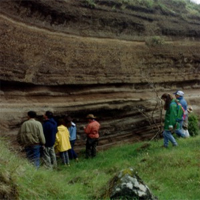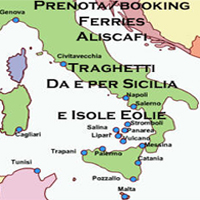Vulcano island
Numero di catalogo: 0101-05= (Smithsonian Institution, Global Volcanism Program) Altezza sopra il livello del mare: 500 m Ubicazione: 38.404°N, 14.962°E Superficie totale: 21 chilometri quadrati (isola di Vulcano) Vulcano, origine del termine oggi applicato per tutti i vulcani nel mondo, è la più meridionale delle Isole Eolie. La sua frequente attività nell’epoca classica ha ispirato […] ... Continue Reading →
Panarea Island
Catalogue number: 0101-041 (Smithsonian Institution, Global Volcanism Program) Height above sea level: 421 m Location: 38.63°N, 15.07°E Total area: 3.4 square kilometres (island of Panarea) Panarea is the smallest of the Aeolian Islands, but contra among the archipelago’s potentially active volcanoes. Considered until recently an ‘extinct’ volcano, there is now data indicating a much younger […] ... Continue Reading →
Filicudi island
Numero di catalogo: non catalogato (Smithsonian Institution, Global Volcanism Program) Altezza sopra il livello del mare: 774 m Ubicazione: 38.569°N, 14.564°E Superficie totale: 9.5 chilometri quadrati (isola di Filicudi) L’isola di Filicudi è notevolmente più complessa rispetto ad Alicudi, e possibilmente si tratta dell’isola più antica dell’arcipelago delle Eolie: sono stati datati dei prodotti di […] ... Continue Reading →
Salina Island
Numero di catalogo: non catalogato (Smithsonian Institution, Global Volcanism Program) Altezza sopra il livello del mare: 962 m (Monte Fossa delle Felci) Ubicazione: 38.562°N, 14.837°E Superficie totale: 26.8 chilometri quadrati (isola di Salina) Salina è la seconda più grande delle isole Eolie, dopo Lipari, e vanta la cima più alta dell’arcipelago, il Monte Fossa delle […] ... Continue Reading →
Stromboli Island
Stromboli Island (STRONGYLE) Surface area 12.6 kmq. Inhabitants 550 Catalog number: 0101-04= Elevation above sea level: 924 m Location: 38.789°N, 15.213°E Total area: 12.6 square kilometers (Stromboli Island) Stromboli, one of the few volcanoes on Earth in almost continuous activity, is the northernmost of the seven Aeolian Islands. Its edifice rises more than 920 meters […] ... Continue Reading →

Alicudi Island
Evoluzione geologica di Alicudi Numero di catalogo: non catalogato (Smithsonian Institution, Global Volcanism Program)Altezza sopra il livello del mare: 675 mUbicazione: 38.542°N, 14.353°ESuperficie totale: 5.2 chilometri quadrati (isola di Alicudi) Alicudi è la più occidentale e isolata delle Isole Eolie, e geologicamente il più giovane dei complessi vulcanici eoliani. […] ... Continue Reading →

A collection of masks in Lipari’s Museum
The most complete documentation in Italy on the costume scenic ancient Hellas Greek theater, worship and mysteries – A Lipari statues and masks from funerar An extraordinary collection of masks and statuettes in theatrical subjects found in the tomb of the fourth and third centuries BC and stored in the classical section of the Aeolian […] ... Continue Reading →

Aeolian Islands: Virtual tour of the acropolis of Lipari
Web applications to download to your smartphone illustrating tourist routes (frame the QR codes with your smartphone) I PERCORSI DEL CONFINO – The application allows you to be informed about the places on Lipari that had great significance in the stories of the internees sent to the island for punishment by the fascist government. PROJECT […] ... Continue Reading →
The Archaeological Museum in Lipari
SECTION I It is located in the ancient palace of the bishops, next to the Cathedral, built in the seventeenth century. Materials of the excavations of the Acropolis of Lipari ROOM I – On display are the materials of the two older stages of the Neolithic Eoliano. ROOM II – Materials of the third and […] ... Continue Reading →

Aeolian in the Unesco World Heritage list
According to the World Heritage Convention, for cultural heritage means a monument, group of buildings or site of historical, aesthetic, archaeological, scientific, ethnological or anthropological. The natural heritage, however, indicates relevant physical, biological, and geological, as well as the habitat of endangered plant and animal species and areas of particular scientific and aesthetic value. The […] ... Continue Reading →



